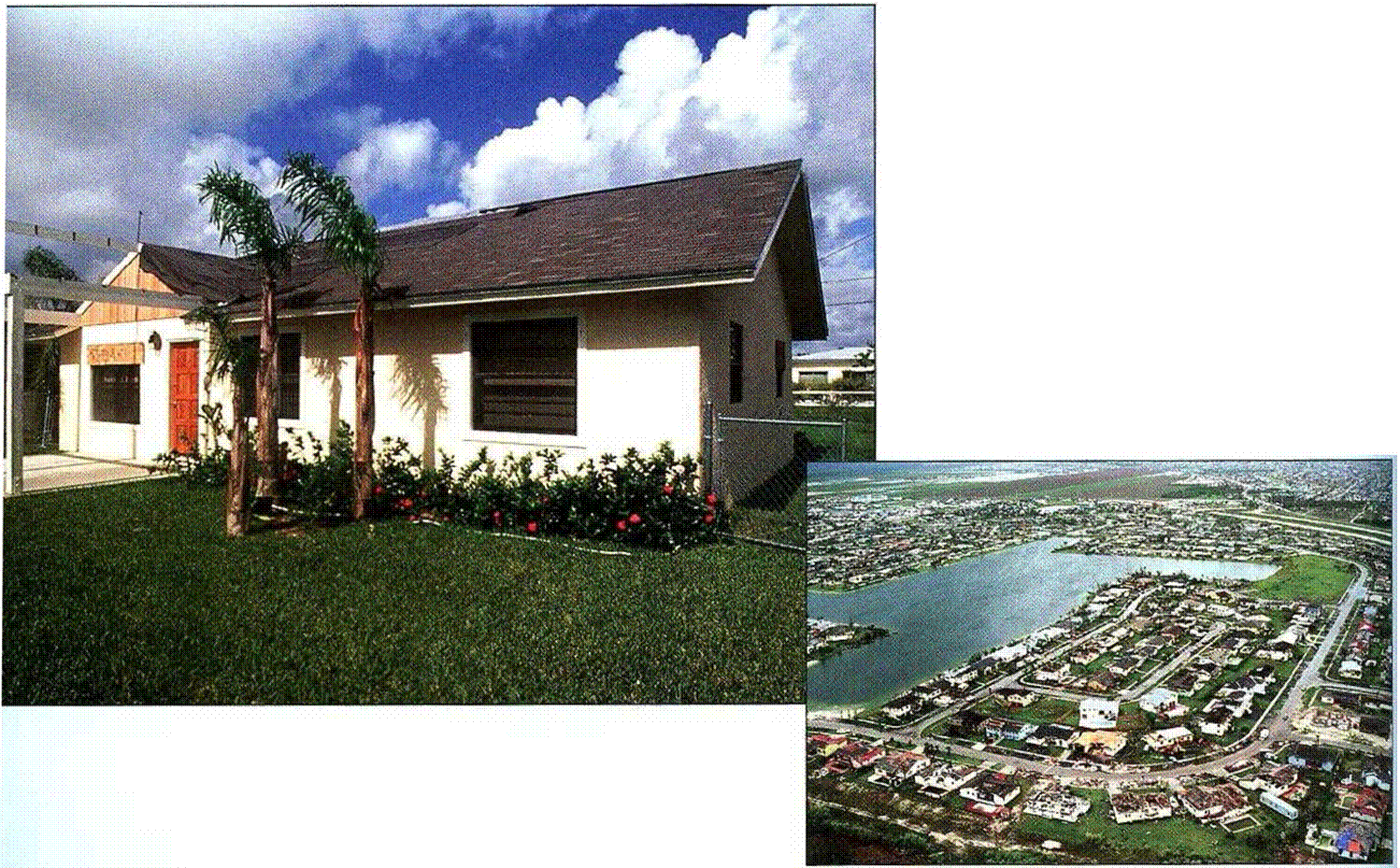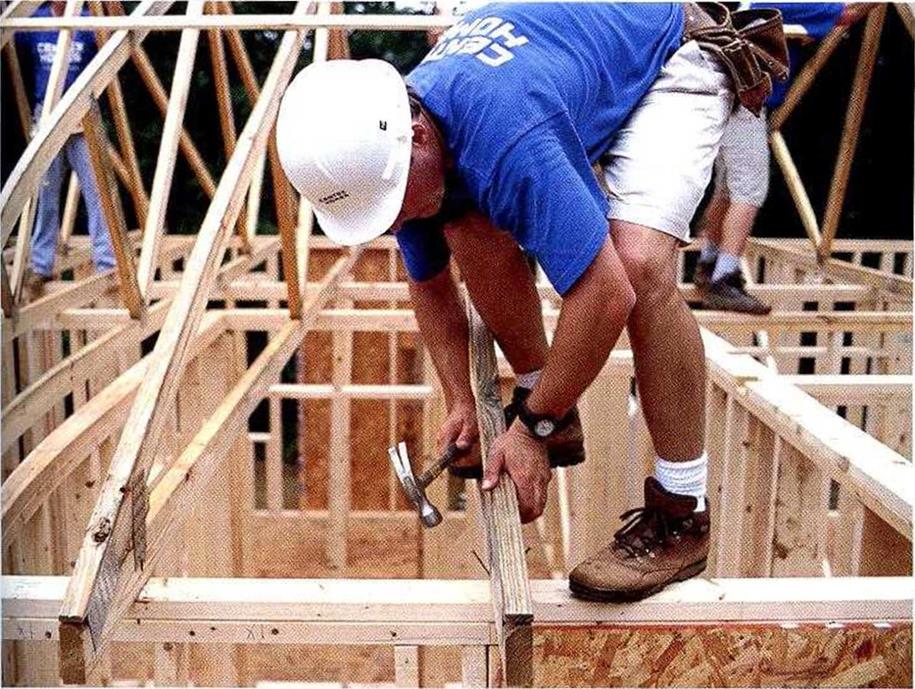Habitat Houses—Built to Take a Licking

THE MOST DEVASTATING natural disaster in the history of the United
/
States began to take shape off the west coast of Africa on August 14, 1992. Gathering strength as it made its way across the Atlantic Ocean, the storm that came to be known as Hurricane Andrew finally made land – fall at Homestead, Florida, just alter 5 a. m. on August 24th. With sustained winds of 145 mph and gusts exceeding 175 mph, Andrew was no
run-of-the-mill hurricane. Although the death toll was relatively low for a storm of this intensity (40 people died as both a direct and an indirect result of Andrew), the economic damage exceeded $25 billion.
As it turns out, Habitat had built or rehabbed 27 houses in Homestead and in the nearby communities of Liberty City and West Perrine. A few
^ 4
days after the storm, Kevin McPeak, Habitats regional administrative
coordinator, drove out to survey the damage.
Hoping for the best but bracing himself for the worst, Kevin was astonished and elated as he discovered, house by house, that everyone of the Habitat homes had survived Andrews onslaught. Carpets were ruined and windows were broken; a few houses had even shifted a bit on their foundations. But compared to most of the houses around them, the 1 Iabitat houses stood tall. Clearly, Habitat knows how to build houses.
|

ladder or a scaffold instead. To make it casv to move trusses into position, I like to build a catwalk, or walkway, over open sections, such as the living room. (For directions on howto erect a catwalk, see the illustration at right.)






Leave a reply